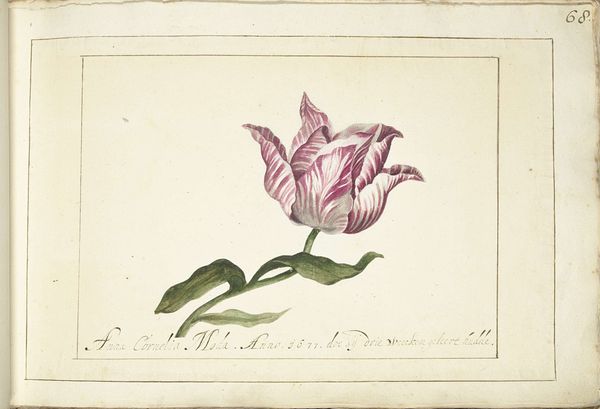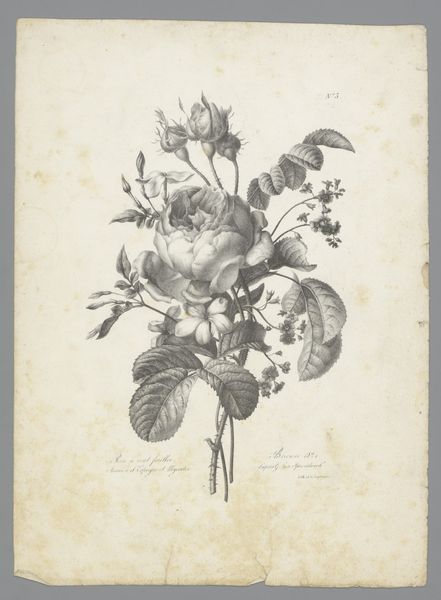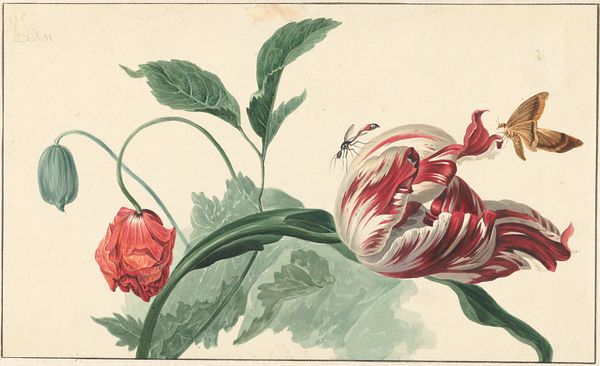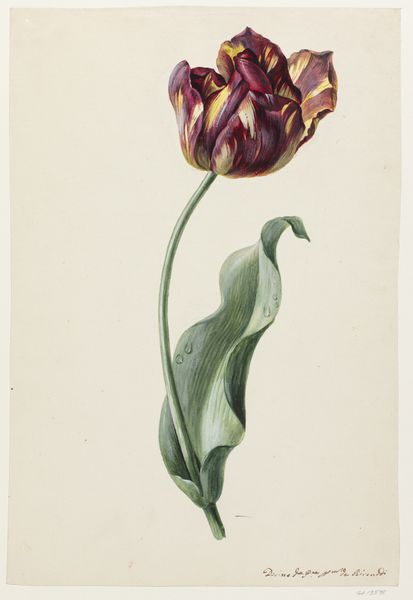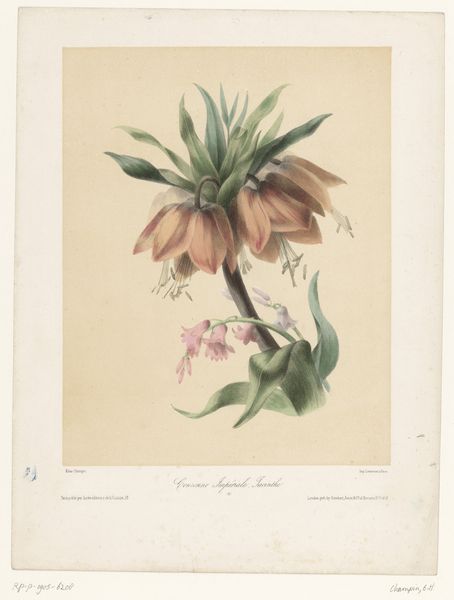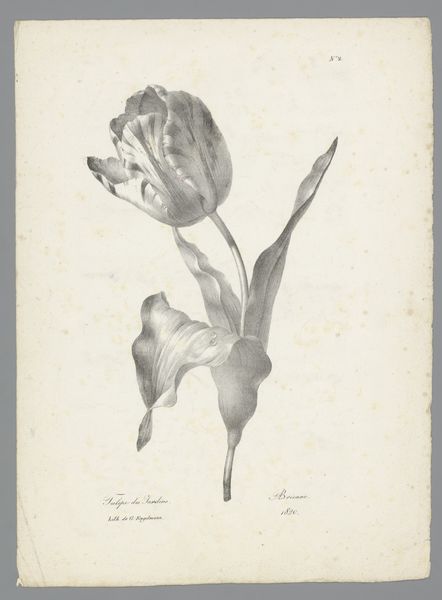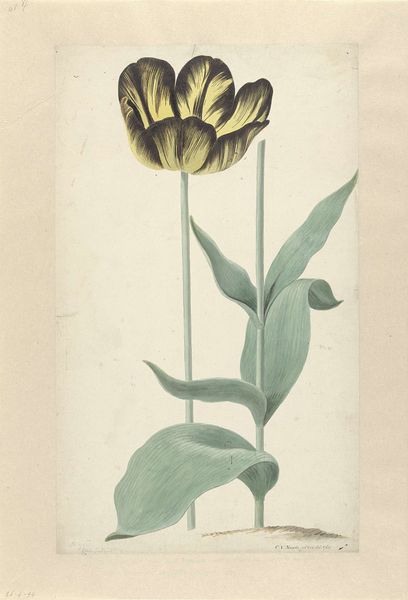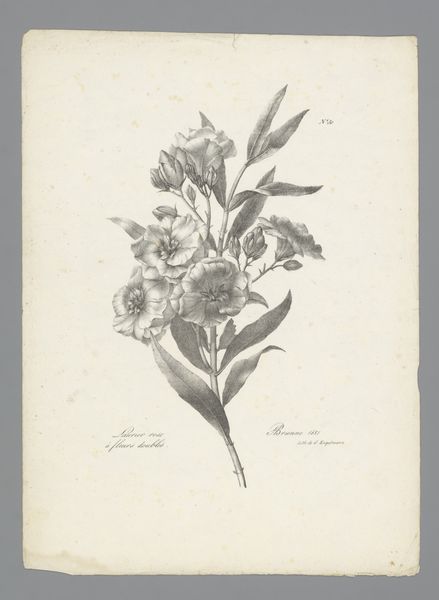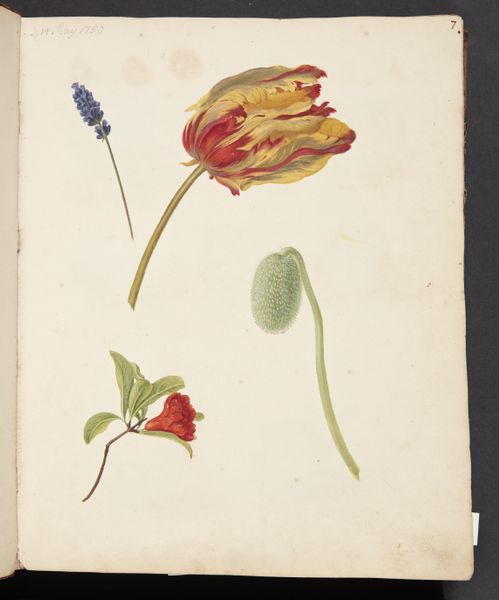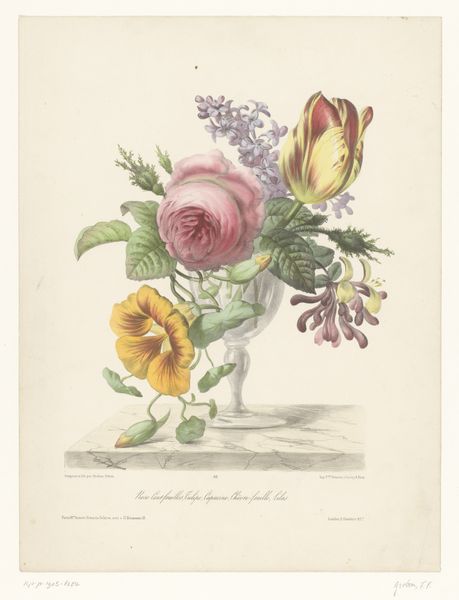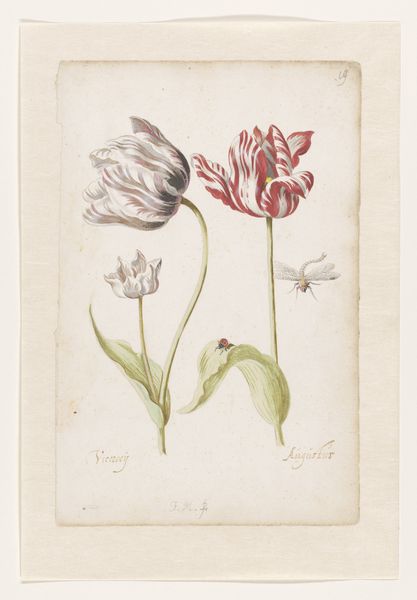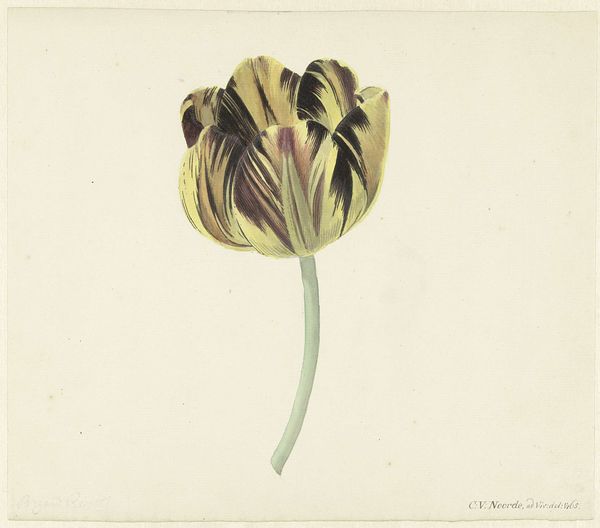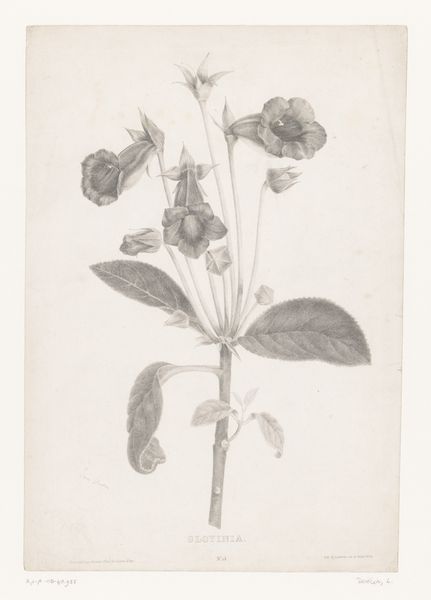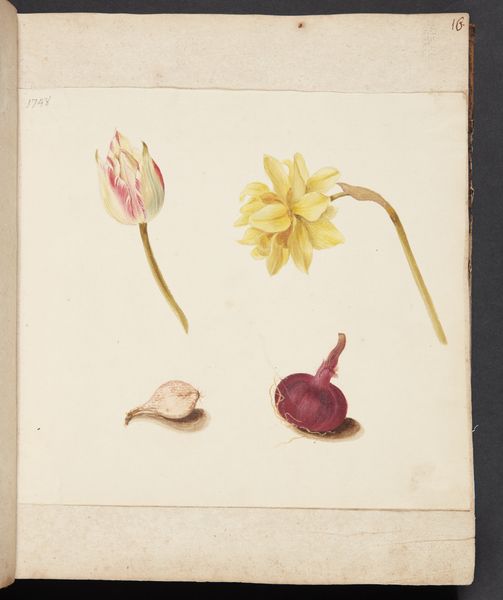
drawing, paper
#
drawing
#
paper
#
academic-art
Dimensions: height 256 mm, width 202 mm
Copyright: Rijks Museum: Open Domain
Curator: Before us we have "Doornappel," an intricate drawing by Hendrik Schwegman, likely completed between 1771 and 1816. It’s a beautiful example of botanical illustration rendered with graphite and watercolor on paper. Editor: Well, my first impression is one of slightly unsettling beauty. The flower is so meticulously rendered, almost clinically, yet its drooping form gives it a feeling of melancholic drama, wouldn't you agree? Curator: Absolutely. The artist's precision creates an almost scientific detachment. Note the strategic use of light and shadow, and how the cool whites and subtle grays contribute to a sense of volume, isolating the specimen. The draughtsmanship and measured use of washes demonstrate Schwegman's meticulous technique. Editor: Yes, and that isolated presentation adds to the drama. I keep imagining it’s been pinned like a specimen. The velvety textures suggested by the subtle shading almost make me want to touch it—which I obviously won't! But it is precisely its clinical representation that makes it strangely compelling, isn't it? Like something discovered and dissected on the moon... Curator: Precisely. It echoes a broader Enlightenment preoccupation with taxonomy, categorization and rational knowledge of the natural world. Notice the accompanying text, "STRAMONIUM fructu spinose retunde, flore violaceo duplo vel triplic". Editor: Okay, the Latin elevates the illustration, giving the image some scientific authority, whilst at the same time somehow embalming the flower in textual aspic. A linguistic echo chamber! The leaves are more relaxed than the stiff formal beauty of the flower's bloom. The artist adds a bit of dynamism, no? Curator: Yes, I think so. Perhaps a gesture towards a living naturalism. The artist’s handling of differing qualities indicates his skilled observation as much as the scientific ethos in depicting nature accurately and systematically. Editor: What remains with me most powerfully is that melancholic note it strikes. Beauty always flirts with something more troubled, doesn't it? Thank you for that beautiful elucidation! Curator: Indeed. Schwegman gives us not just botanical accuracy but something resonating in a more oblique emotional register too. Thank you for the discussion.
Comments
No comments
Be the first to comment and join the conversation on the ultimate creative platform.
